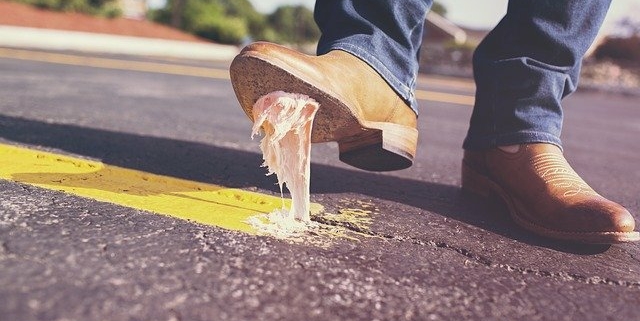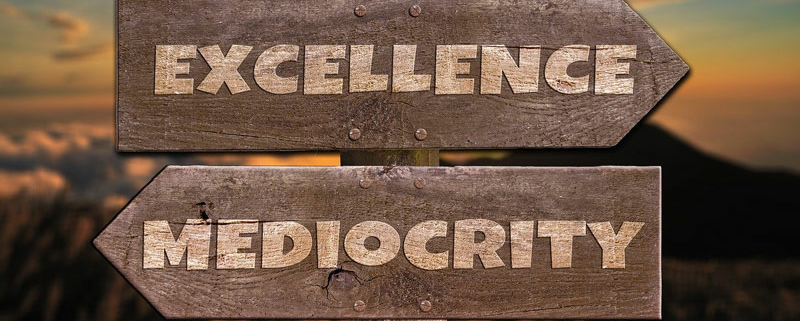Are Your Memories Fake?
How well do you remember the student who threw tantrums every day in your classroom? What will you remember about the pandemic of 2020 (wearing masks, social distancing, scrambling to get distance learning going)? Will you remember it as an awful, wasted year of your life? Maybe you’d like to have uplifting memories in your life instead of unhappy ones. Keep reading… it may be easier than you think.
The Research
Are your memories mostly true? After all, they are partly based on your own experiences, what you learn from the news and from other sources. Many variables will influence accuracy. The role you play as observer, participant, victim, etc. matters. The intensity of the event (if you are close up or far away) matters. The complexity (more or less details) of the event matters.
Additionally, the emotional tone matters. For example, strong negative emotional events (trauma, crisis, accidents) enhance gist memory and are often sketchy for details unless you were in a specific role at the event (Sharot, Martorella, Delgado & Phelps, 2007). Finally, the way others around you respond to what they hear can influence your memory (Sotgiu & Rusconi, 2014). In short, our memories are a kaleidoscope of fragments that often take work to get right.
This month, two things are critical to understand. First, you can influence the creation of your memories. Second, after a while you can modify your memories.
Most of your memories are just good enough to get by. It’s time for you to start driving your own bus and have better memories.
Let’s return to our opening comments about the tantrum-throwing student and COVID memories. How might you influence your own memories from the year 2020? “Don’t they just ‘happen’ to us?” you might ask. The answer is Yes and No. New memories are mediated by a host of A-B-C factors including Awareness, Background and Complexity.
- Awareness of your orientation and relevance of the input. In other words, is it meaningful to you? Does this memory event have some connection (a self-reference) to you? What are your own biases and perspectives?
- Background and prior memories may influence and bias new memory formation. Does your background include having mental tools to attack biases? Your old memories (distorted, biased, false, etc.) can influence new memories. (Goldfarb, Chun & Phelps, 2016). What you think should be happening can create denial of what is happening. Memories can be very messy!
- Complexity (including intensity) of the sensory input (emotions, smell, actions, touch, visual, auditory, taste, the localized environment, etc.) impacts memory quality. Greater intensity leads to stronger memories (Roozendaal B, McEwen BS, Chattarji S 2009). More confusion reduces quality of memories.
Let’s frame the memory issue around just two things for the moment: classrooms and your health. If a teacher remembers more of the good things that a student does, expectations rise. In the case of the student who throws tantrums, in the teachers mind the negative memories this action produces may prevail over the positive memories of that particular student. In both cases, the retelling of these memories as stories will strengthen the memory (Kida, 2020).
Next, let’s turn to your health and the pandemic. Perhaps you thought the media was helpful in guiding your actions through the COVID ‘crisis’. Others might disagree and think the media has been highly selective or blatantly biased in their reporting of the disease. Biases, either way, can influence your memories. There were at least 16 major media biases used daily to publicize this pandemic, orchestrate viewer thinking, and influence your behaviors (https://fee.org/articles/the-cognitive-biases-behind-societys-response-to-covid-19/). This link will help you understand how the media has biased your memories.
So, how do we make choices in the matter of forming some ‘positive’ memories? Each of us has three possible paths for making memory changes:
1) Your initial attention In your classroom, the attention and emotion you give to students will impact both your memory of them and their memory of you. Doing reviews of the classroom content is important, and so are your own mental reviews about each student.
On the health concern, you might give attentional time to the media news about the pandemic. The news generally appears in short 15-90 second snippets on TV or radio. By itself, this invites brain biases (shortcuts in thinking) because of a lack of time to pause, reflect, and verify (Masip, Garrido & Herrero, 2009). Maybe you choose the exact same news sources each day (familiarity bias). This choice of limited news sources embeds selective info into your brain using confirmation biases (Goldfarb, Chun & Phelps, 2016). If your TV or Internet news is mostly negative, you remember it better. Why? Your survival brain says, “Pay attention to risks!” Your brain has a memory bias for remembering mostly negative input (Kätsyri, Kinnunen, Kusumoto, Oittinen & Ravaja, 2016).
2) Your own emotional state Your ‘state’ is critical for the tone in your memory formation. During the time any new memory is formed, your own state is an influencer. Are you stressed or angry? Do you believe what you’re being told, or are you a healthy skeptic? Emotions play into your memory formation (Jiang, Brashier & Egner, 2015). For example, when you’re moderately stressed, you enhance memory formation. But too little or too much stress may not evoke the right balance of cortisol for optimal memories (van Stegeren, 2008).
3) Your later retrieval and retelling of the memory What you re-tell and share with others matters. Why? Each re-telling of the story either confirms or modifies the memory (Yuan, Major-Girardin, & Brown, 2018). As an example, the fisherman stands with his hands held apart, and says, “The fish was THIS big.” But with each story told, the hands are held a bit further apart (very sneaky). Another example you hear, “The flight was packed; not a single empty seat.” But were there empty seats you missed? Could you have mixed up this flight with another one you took? Did you recall the fight attendant say, “This flight is almost (or nearly) full”? What you see and hear can bias your memories. Then we end up with false memories. We believe something is true when it is actually a lie. This can happen both in the short term and the long term (Abadie & Camos, 2019).
We now know that reactivating memories creates a neurological ‘window’ where the memory retrieved is most susceptible to being changed. Your ‘apparently’ stable memories need an activated and unstable state for you to modify them during a process known as reconsolidation. As you recall a memory, it is more easily altered and susceptible to future modifications (Schwabe, Nader & Pruessner, 2014). Now, let’s turn to how to make better memories.
Practical Applications
First, is there any good reason to shape, influence, or alter memories? You might believe that some negative memories serve you well. “He’s the student who throws chairs, so I’ll be cautious around him.” But that memory alone would bias you to connect with that student less, and maybe avoid fostering your usual warmth. Yet, when you orchestrate close connections or positive feelings in class with that student, you’ll find you can ‘have your cake and eat it too.’ How? The broader relationship will strengthen because you ‘balanced’ the negative memories with positive ones.
As we age, we start to value the good memories more. More positive memories can make for a better life. We all know of people who have had a seemingly fairytale life and yet their memories could be awful. Then, there are also those who have had dicey or negative events happen to them, and they recall, “We were so lucky to get out of that alive. Even today, it fills me with gratitude.”
As you can see, making and modifying memories is mostly up to you. Here are three ways to get started making memories better.
1) Influence your initial attention (manage the original input of the memory). In the classroom, when you smile more at students, nod your head and give their response more time and appreciation, stronger emotional memories are formed in both you and them.
At home, let’s say that you invested 15-45 minutes a day (we all are different) on local and national news. Instead of having your favorite “go to” familiar source, invite new input to your brain to broaden your understanding and memory. How do you do this? Check out the site where a nonprofit rates the major media sources and highlights which are more liberal and which are more conservative. I love this site! Go to: www.adfontesmedia.com Diversify the media sources you consume daily (liberal, middle of the road, and conservative). By the end of the week, you will have heard many voices and opinions. As a result, you will be a more sane, happier person and your memories will improve. I use this suggestion by engaging 5-8 sources for my own news every week.
2) Manage your emotional state. At school, teachers often have strategies to clear their head between classes or on breaks. Since your own emotional state will flavor the memories formed, ensure you are feeling at least neutral (or pretty good) as you head back into the classroom.
If you’re home, go for a short walk, listen to your favorite music, or go to websites that help you feel better. Use Calm.com, 1000awesomethings.com or watch the video at intenseexperiences.com/being-happy.html, The takeaway here is simple; you influence your brain not just with content, but with your feelings.
3) Be purposeful in retelling or shaping the memory. Ask yourself, “What kind of memories do I want?” Savvy classroom teachers begin early with ‘sculpting and shaping’ the news, the experiences, and the daily ‘student stories’ into a coherent narrative for youngsters (Westby & Culatta, 2016). For social and emotional skills, cultural awareness, and sense of self, helping students construct a useful narrative of childhood can be healing (Hammack & Toolis, 2014).
When researchers studied traumatic events in children, those children who had caregivers who helped them ‘shape their memories’ into a coherent storyline fared better. What mattered most was providing detailed and coherent personal narratives. By the time the kids were in elementary school, children typically showed a unique, positive, and coherent sense of self (Fivush, Habermas, Waters & Zaman, 2011).
But what about adults? The evidence suggests that developing a coherent narrative (purposeful memory we have shaped in our brain) about an event is actually better than having social support (Vanaken, Smeets, Bijttebier & Hermans, 2021). In short, when you recall a memory, putting a healthy spin on it may help you (or others) sleep better at night.
We started with a question; Are Your Memories Fake? Only you know your own world. During the health crisis we have all been dealing with, did you become more aware of other’s needs? Did you have to learn new skills? Did you invest more time with those close to you? Did you take the opportunity to slow down? Did you choose to eat better? The choice of pandemic memories is an open door. Instead of memories formed by those who are stressed, ‘losing it’, or selling you on their version of the “news”, it’s in your hands (well, in your brain) to shape healthy memories.
CEO, Jensen Learning
Brain-Based Education
CITATIONS:
Abadie M, Camos V. (2019). False memory at short and long term. J Exp Psychol Gen. 148,1312-1334.
Conway, M. A., & Pleydell-Pearce, C. W. (2000). The construction of autobiographical memories in the self-memory system. Psychological Review, 107, 261–288.
Fivush R, Habermas T, Waters TE, Zaman W. (2011). The making of autobiographical memory: intersections of culture, narratives and identity. Int J Psychol. 46, 321-45.
Goldfarb EV, Chun MM, & Phelps EA. (2016). Memory-Guided Attention: Independent Contributions of the Hippocampus and Striatum. Neuron. 89, 317-24.
Eppinger B, Herbert M, Kray J. (2010). We remember the good things: Age differences in learning and memory. Neurobiology Learn Mem. 93, 515-21.
Hammack, PL & Toolis, E. (2014). Narrative and the social construction of adulthood. New Dir. Child Adolesc Dev. 145, 43-56.
Jiang J, Brashier NM, Egner T. (2015). Memory Meets Control in Hippocampal and Striatal Binding of Stimuli, Responses, and Attentional Control States. J Neurosci. 35,14885-95.
Kätsyri J, Kinnunen T, Kusumoto K, Oittinen P, Ravaja N. 2016. Negativity Bias in Media Multitasking: The Effects of Negative Social Media Messages on Attention to Television News Broadcasts. PLoS One.11(5):e0153712.
Kida S. (2020). Function and mechanisms of memory destabilization and reconsolidation after retrieval. Proc Jpn Acad Ser B Phys Biol Sci.96, 95-106.








